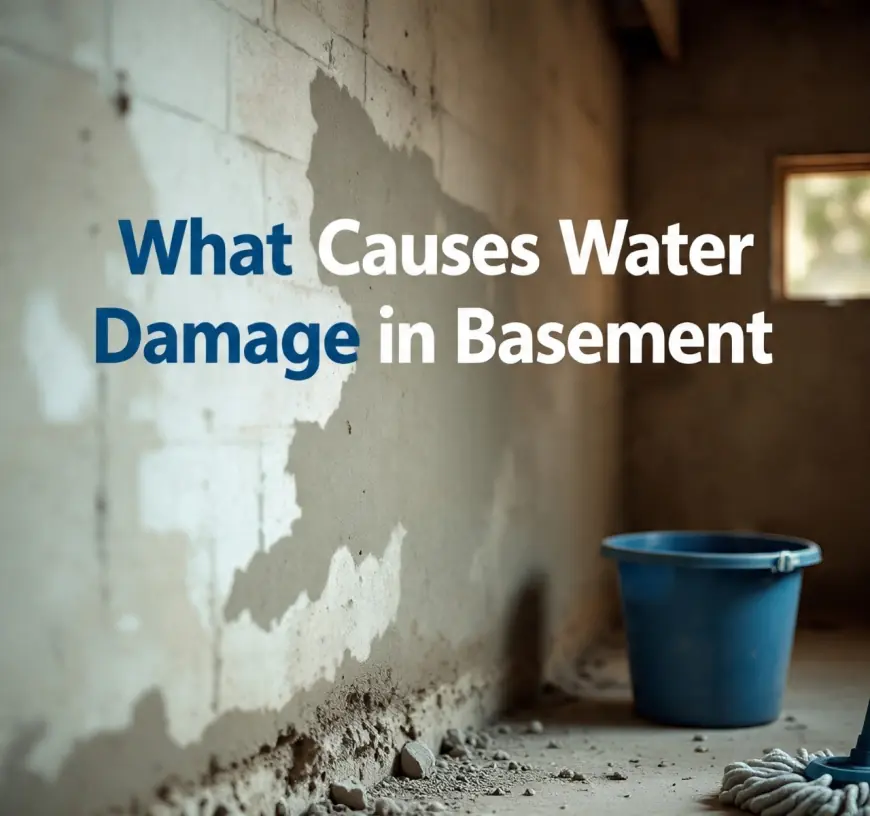What Causes Water Damage in Basements
Discover causes, signs, and solutions for water damage in basement areas. Prevent mold, structural issues, and costly repairs with expert tips.

If you’ve ever walked down to your basement after a heavy rain only to step in a cold puddle, you know that sinking feeling all too well. Water sneaking into basements is more common than most homeowners would like to admit, and it doesn’t take much to turn a dry, cozy space into a musty, soggy headache. Over the years, I’ve run into my fair share of damp basements—sometimes it’s a trickle, other times a full-on indoor pool. So, what really brings water into your underground retreat? Let’s roll up our sleeves and dig into the main culprits behind water damage in basement spaces.
1. Key Features: The Hidden Trouble Spots
Basements are naturally prone to moisture since they’re tucked below ground, surrounded by soil that holds water after every rain. It’s not always obvious, but even small cracks in the foundation walls or floor can open a door for water to seep in. Sometimes, it’s not a crack at all—it could be a window well that fills up and leaks, or a sump pump that quietly quits working. Gutters and downspouts that dump rainwater too close to your house are another secret enemy. Even a little slope in the wrong direction can steer water right toward your basement walls. In short, the “features” of your home—like its slope, drainage setup, and tiny foundation gaps—are like backstage passes for water looking to join the party.
2. Safety: More Than Just a Mess
When water starts finding its way into your basement, it’s easy to focus on the inconvenience, but the real problem can be what you don’t see. Water can bring along unwanted guests—think mold, mildew, and bacteria—that thrive in damp, dark places. Breathing in mold spores can make allergies or breathing problems worse, especially for kids or anyone with asthma. There’s also an electrical hazard if water comes in contact with wiring or outlets. And if you store anything down there, water can ruin family photos, documents, or even that old box of holiday decorations. So, while it might seem like just a puddle at first, water damage in the basement can pile up into a much bigger safety concern.
3. Cost: The Price Tag of Neglect
Fixing water damage isn’t just about mopping up the mess. Left unchecked, even minor leaks can lead to major repairs. The longer water lingers, the more likely you’ll have to deal with things like warped flooring, peeling paint, and crumbling drywall. And that’s before you even get to the cost of removing mold or replacing ruined belongings. Sometimes, structural damage can creep in quietly, racking up bills you never saw coming. That’s why it’s a smart move to catch problems early and address them before they grow into wallet-draining disasters.
| Common Issues | How It Happens | Potential Cost |
|---|---|---|
| Foundation Cracks | Water pressure from outside pushes in through gaps | $500 - $10,000 (depending on severity) |
| Gutter Problems | Clogged or broken gutters spill water near foundation | $100 - $2,000 |
| Failed Sump Pump | Pump stops working, water isn’t redirected | $300 - $2,500 |
| Improper Grading | Ground slopes toward home, not away from it | $500 - $3,000 |
| Leaky Windows | Poor seals or window wells fill up and overflow | $200 - $1,500 |
“A dry basement is the foundation for a happy home—don’t let a little water become a big problem.”
4. Emergency Service: When Time Isn’t on Your Side
Sometimes, water damage happens in the blink of an eye—a burst pipe, a sudden downpour, or a sump pump that fails right before a storm. When that happens, waiting isn’t an option. Fast action is key to keeping damage under control. That’s why emergency water removal services exist: their job is to swoop in, pump out the water, dry everything out, and stop mold before it starts. While you might not think you’ll ever need them, knowing who to call can make all the difference when the unexpected happens. Keep a list of trusted pros handy, just in case your basement decides to turn into an indoor lake at 2 a.m.
Wrapping It Up: Stay One Step Ahead
No one wants to discover their basement underwater, but knowing the main suspects behind water damage makes it easier to keep your space dry. Keep an eye on those sneaky trouble spots, don’t ignore small leaks, and be proactive about repairs. It’s not just about avoiding a mess—it’s about protecting your home, your wallet, and your peace of mind. And if you ever need help, remember there’s always an emergency service ready to jump in when you need it most.
Read More: Arverne Water Damage Restoration
What's Your Reaction?
 Like
0
Like
0
 Dislike
0
Dislike
0
 Love
0
Love
0
 Funny
0
Funny
0
 Angry
0
Angry
0
 Sad
0
Sad
0
 Wow
0
Wow
0



















































